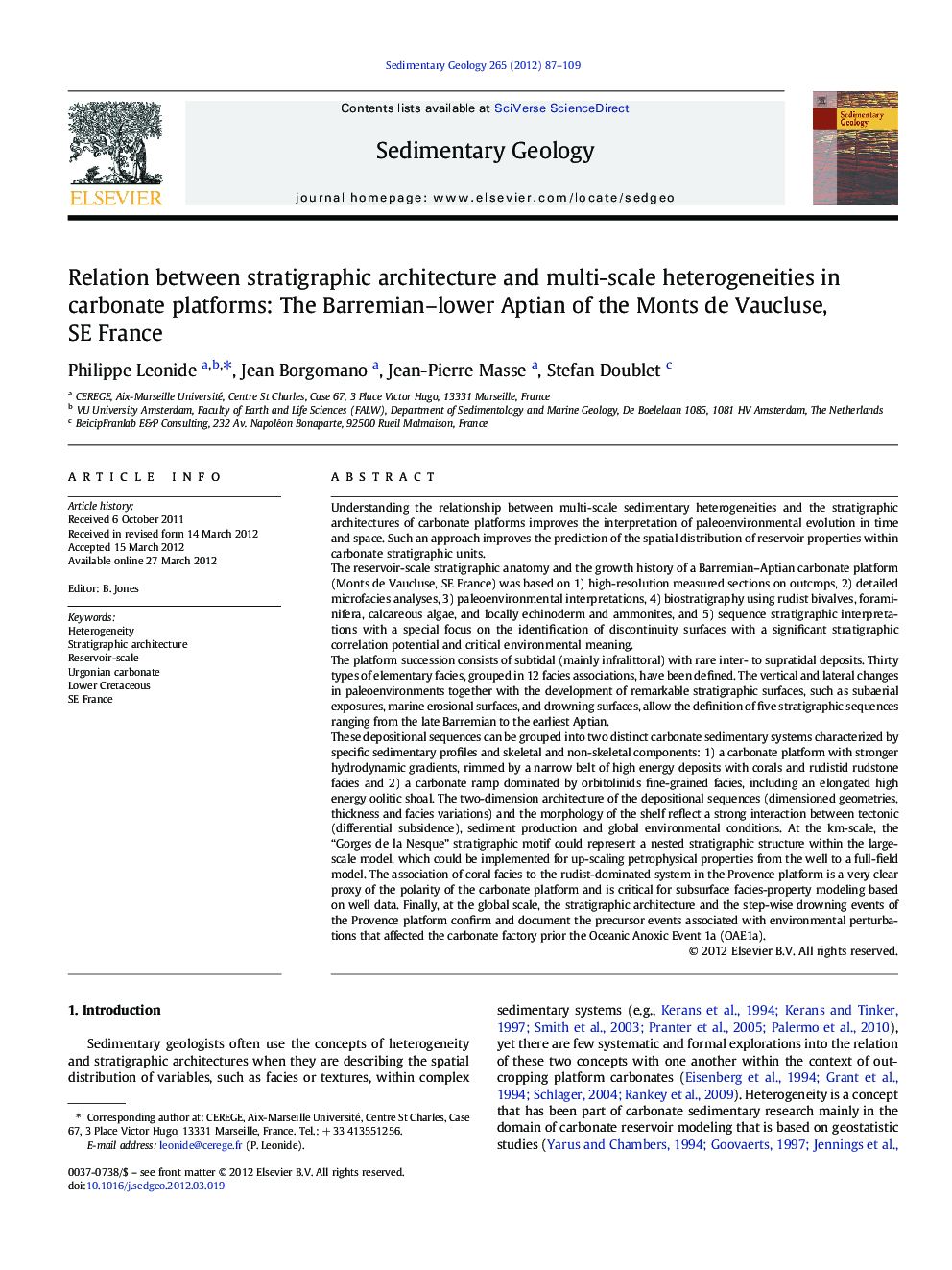| Article ID | Journal | Published Year | Pages | File Type |
|---|---|---|---|---|
| 4689798 | Sedimentary Geology | 2012 | 23 Pages |
Abstract
These depositional sequences can be grouped into two distinct carbonate sedimentary systems characterized by specific sedimentary profiles and skeletal and non-skeletal components: 1) a carbonate platform with stronger hydrodynamic gradients, rimmed by a narrow belt of high energy deposits with corals and rudistid rudstone facies and 2) a carbonate ramp dominated by orbitolinids fine-grained facies, including an elongated high energy oolitic shoal. The two-dimension architecture of the depositional sequences (dimensioned geometries, thickness and facies variations) and the morphology of the shelf reflect a strong interaction between tectonic (differential subsidence), sediment production and global environmental conditions. At the km-scale, the “Gorges de la Nesque” stratigraphic motif could represent a nested stratigraphic structure within the large-scale model, which could be implemented for up-scaling petrophysical properties from the well to a full-field model. The association of coral facies to the rudist-dominated system in the Provence platform is a very clear proxy of the polarity of the carbonate platform and is critical for subsurface facies-property modeling based on well data. Finally, at the global scale, the stratigraphic architecture and the step-wise drowning events of the Provence platform confirm and document the precursor events associated with environmental perturbations that affected the carbonate factory prior the Oceanic Anoxic Event 1a (OAE1a).
Related Topics
Physical Sciences and Engineering
Earth and Planetary Sciences
Earth-Surface Processes
Authors
Philippe Leonide, Jean Borgomano, Jean-Pierre Masse, Stefan Doublet,
